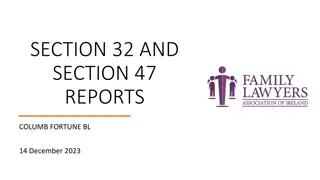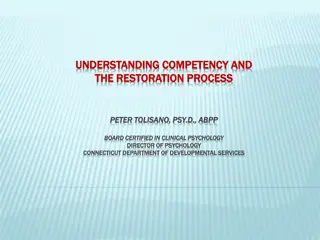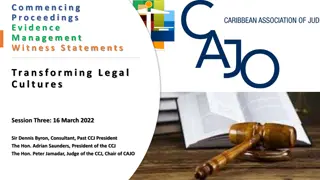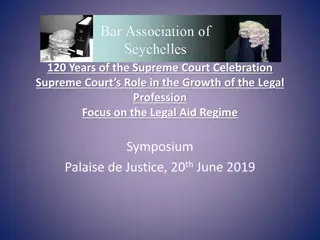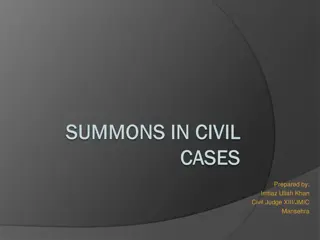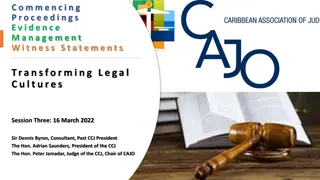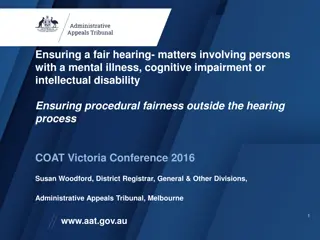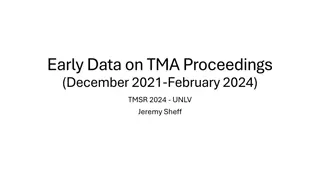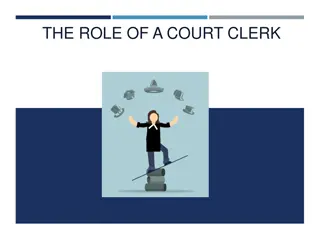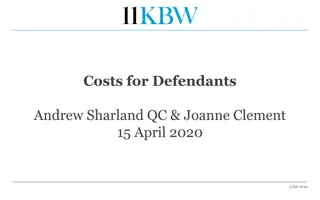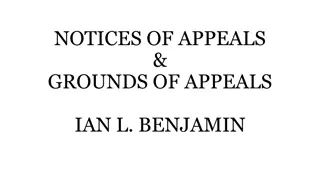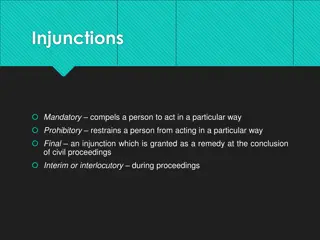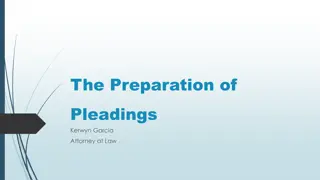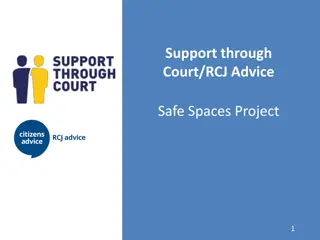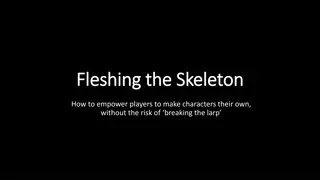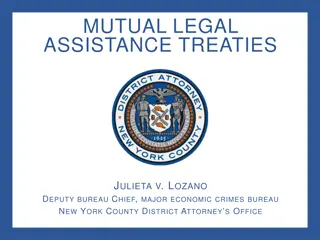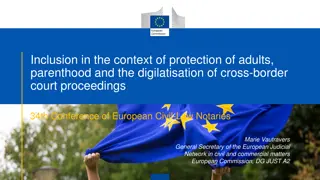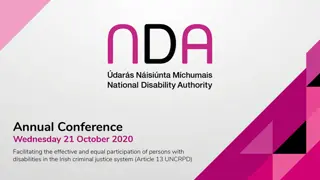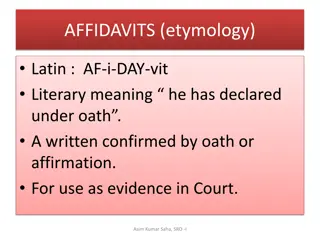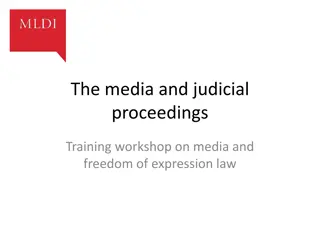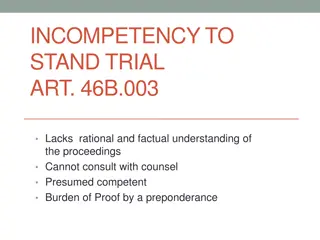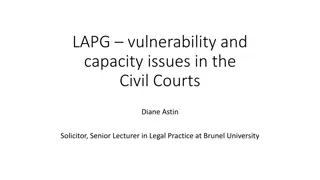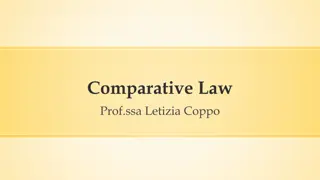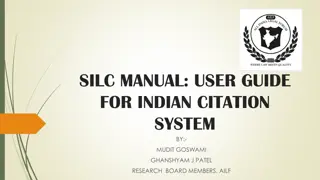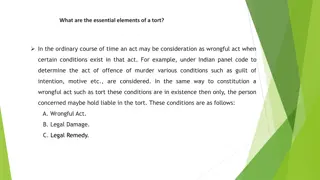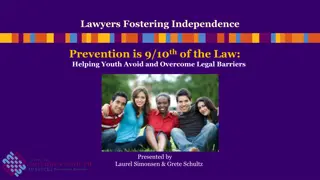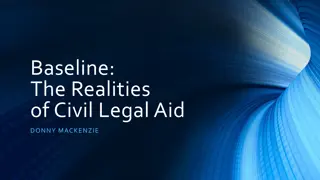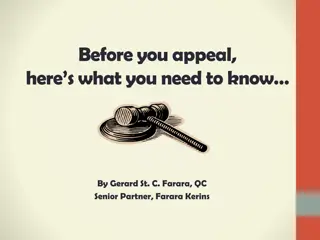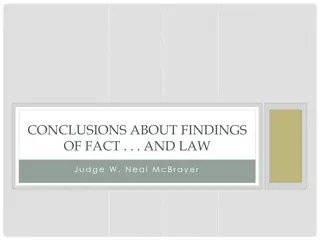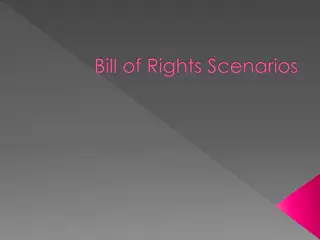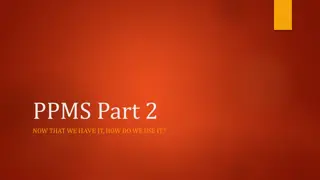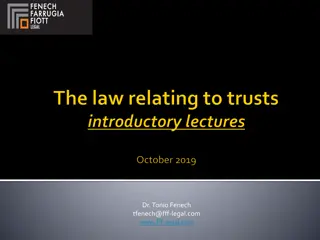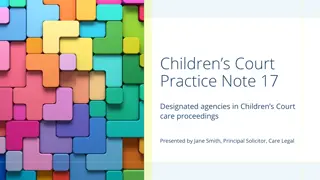Evolution of Directions on Good Character in Legal Proceedings
The significance of providing good character directions in legal proceedings has evolved over time, progressing from being discretionary to mandatory in certain situations. This presentation delves into the historical development of allowing evidence of good character, the definition of character in legal context, and the importance of trial judges giving specific directions when good character is raised as an issue by the accused. The aim is to explore how the law has evolved and the current requirements for good character directions.
Download Presentation

Please find below an Image/Link to download the presentation.
The content on the website is provided AS IS for your information and personal use only. It may not be sold, licensed, or shared on other websites without obtaining consent from the author. Download presentation by click this link. If you encounter any issues during the download, it is possible that the publisher has removed the file from their server.
E N D
Presentation Transcript
Good Character Directions When should they be given and what should be said
Introduction The importance of good character directions has developed over time. From being relatively unimportant to being left to the discretion of the jury, to being mandatory in certain circumstances.
Aim for this presentation I hope in this paper to show: how the law has developed, what the current position is, and the general directions that a trial judge is required to give when an accused person raises the issue of his or her good character.
What is character in this context? Stirland v Director of Public Prosecutions [1944] AC 315, where Viscount Simon LC said at pages 324-5: ... Does it refer to the good reputation which a man may bear in his own circle, or does it refer to the man's real disposition as distinct from what his friends and neighbours may think of him? Probably both.
Historical development 1 An accused person was, originally, not competent to give evidence on his own behalf. By the middle of the seventeenth century, however, despite that disadvantage, he could have evidence given on his behalf, by others, as to his good character. See Blackstone s Commentaries on the law of England
Historical development 2 The earliest instance which Stephen records of evidence being admitted of the prisoner's good character is at the trial of Colonel Turner for burglary in 1664 [27 Howell's St. Tr. 40]
Historical development 3 A remarkable instance is provided by the trial of Arthur O'Connor for high treason in 1798 where ... the Attorney-General, Sir John Scott, told the jury(3) that in all doubtful cases, character ought to have very considerable weight indeed.
Historical development 4 the practice of defendants giving an unsworn statement was introduced and was recognised in law in 1883. Defendants testifying in their own defence was also introduced in Jamaica, in cases tried with a jury, by Law 10 of 1911. The right was later extended to all offences .
Historical development 5 The accused s right to make an unsworn statement was abolished In England (by section 72 of the Criminal Justice Act 1982). This was also done in some Caribbean states, including Trinidad and Tobago, The Commonwealth of the Bahamas, St Kitts and Nevis and St Vincent and the Grenadines.
The changes in the law concerning good character directions 1 It was originally left to the discretion of the trial judge as to whether to give a good character direction, especially where it came to what will later be called, the propensity limb .
The changes in the law concerning good character directions 2 By 1993 the courts stipulated that an obligation lay on a judge to give a good character direction where the accused raises that issue. See R v Vye; R v Wise; R v Stephenson [1993] 3 All ER 241
Why is a direction on good character important Fairness evidence of good character is part of the totality of the evidence which is for the tribunal of fact Handbridge [1993] Criminal L. R. 287 . Per Cooke J in R v Newton Clacher
How is the issue of good character raised? 1 The issue of good character must be distinctly raised by the defence. There is no obligation on the trial judge to enquire whether or not the defence wishes to raise that issue.
How is the issue of good character raised? 2 The issue may be raised in one or more of the following media: by relying on pre-trial statements or answers; in the testimony of a witness or witnesses, either for the prosecution or for the defence; in his sworn testimony; in his unsworn statement.
The two aspects - 1 In R v Aziz [1995] 3 All ER 149, Lord Steyn said at page 62: It has long been recognized that the good character of a defendant is logically relevant to his credibility and to the likelihood that he would commit the offence in question. That seems obvious.
The two aspects - 2 There are two possible limbs to a good character direction. The first, and often referred to as the first limb is that of credibility. The second limb is the element of propensity.
The two aspects - 3 The credibility limb will be of critical importance in cases where the decision in the case depends on which of the versions proffered by the prosecution and the defence respectively is to be believed. In such cases, the failure to give a direction on the first limb, where the direction is deserved, may well lead to the conviction being overturned.
The Direction - 1 Give deliberate, specific directions Give the first limb directions if; a. the defendant has made pre-trial statements and relies on them at trial; and/or b. the defendant has given sworn testimony and raises the issue either in his testimony or in the testimony of others.
The Direction - 2 Where the first limb is required, the second limb must accompany it.
The Direction - 3 The credibility limb does not arise if the defendant does not rely on pre-trial exculpatory statements or has not given sworn testimony. Even if other witnesses have testified to his good character.
The Direction - 4 The general rule is that a second, or propensity limb, direction, ought to be given for a defendant of good character, who raises that issue, whether or not that defendant has given evidence or made pre-trial answers or statements.
The Direction - 5 A trial judge will ordinarily indicate that good character cannot amount to a defence, but there are two aspects in which it may be relevant, that is, the credibility of the defendant and propensity of the defendant to commit the alleged crime.
The Direction - 6 A defendant of good character, who has been jointly tried with a co-defendant of bad character, is entitled to a good character direction. The direction that the judge gives the jury in respect of the co-defendant will depend on the circumstances of the individual case.
The Direction - 6 Important cases: a. Teeluck and John v The State of Trinidad and Tobago b. Michael Reid v R
Lies to police In Vye as well as in Aziz, the court held that a good character direction should be given, if the issue is raised, even if the accused has told lies to the police
What should be included in the direction - 1 It is commonplace for the trial judge to indicate that the good character of the defendant does not constitute a defence to the charge, but that it may be relevant in two respects.
What should be included in the direction - 2 In cases where the accused is entitled to a credibility and propensity limb direction, the direction is that since he has given sworn testimony and been cross-examined, or he has given exculpatory pre-trial answers or statements and has raised the issue of his good character, he should therefore be considered as someone who is more than likely to be speaking the truth in important things and is unlikely to have done the act or behaved in the way that the prosecution has alleged.
What should be included in the direction - 3 Where the accused is only entitled to a propensity limb direction, it should be said that he has said, or it has been said on his behalf, that he is a person of good character. His good character, therefore, must be taken into account in the sense that he is a person who is unlikely to have behaved in the way that the prosecution has alleged.
What should be included in the direction - 4 The evidence or exculpatory statements should be weaved into the good character direction and it should be explained why it raises the issue of good character.
Where accused remains silent or gives an unsworn statement If the accused remains silent or gives an unsworn statement only, and has not given exculpatory pre-trial statements or answers, he is only entitled to a propensity limb direction, whether or not the issue of his good character is raised in the unsworn statement only or has also been raised in the sworn testimony of other witnesses.
Where the trial judge is in doubt as to whether the issue has been raised: Where the trial judge is in doubt as to whether the issue has been raised, the question should be raised with counsel. In a case where the trial judge is sitting without a jury, such as in the Parish Courts or in the Gun Court, the best time for securing counsel s submission on the point would be during closing submissions. The question at that time would, of course, be, is a good character direction appropriate in this case?
Conclusion The issue of good character directions have therefore come a far way. The trial judge must consider whether both limbs of the direction are required or only one, and it must be given regardless of whether any other accused is not entitled to such a direction.



